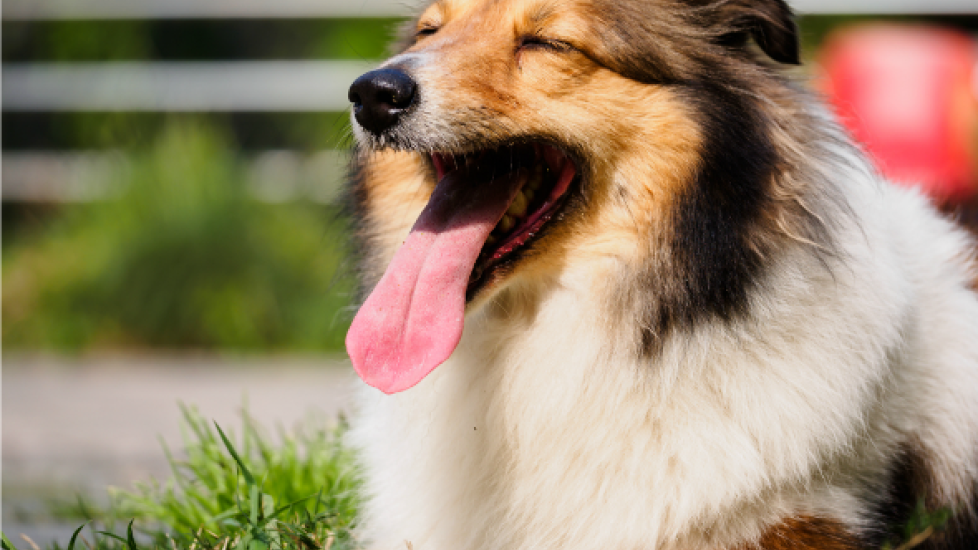Mouth Cancer (Gingiva Squamous Cell Carcinoma) in Dogs
Gingival Squamous Cell Carcinoma in Dogs
Carcinoma, a type of tissue cancer that is particularly virulent, can occur in any part of the body, including the mouth. This form of cancer has the capability of metastasizing quickly through the body, often with fatal results. Of the several types of cancerous oral growths that a dog can be affected by, a squamous cell carcinoma is the most common one. These tumors grow very rapidly and typically invade nearby bone and tissue. Unlike other carcinomas these tumors do not usually spread to other organs, but, like other carcinomas, they are mainly seen in older dogs, around ten years old. However, squamous cell tumors have been seen in dogs as young as three years old.
Symptoms and Types
Causes
No causes have been found.
Diagnosis
You will need to provide a thorough history of your dog's health leading up to the onset of symptoms. Your veterinarian will perform a thorough physical exam on your dog and will take body fluid samples for laboratory analysis, including a complete blood count, biochemical profile and urinalysis to make sure your dog's internal organs are functioning normally. The physical examination will consist of your veterinarian performing an extensive examination of your dog's oral cavity, looking especially for loose teeth and a mass of tissue growth. A simple palpation (examination by touch) will indicate whether the lymph nodes under your dog's jaw and along its neck are enlarged, a confirmation of which would indicate that the body is fighting a diseased condition (as the lymph nodes produce white blood cells). If your dog has enlarged lymph nodes, your veterinarian will take a sample of fluid by aspiration needle to better understand the composition of the fluid. This test may tell your veterinarian if the growth in the mouth has spread to the lymph nodes. Your veterinarian will also order x-rays of your dog's chest and head to determine if the oral tumor has spread to bone and tissue near it, or to the lungs. Your veterinarian will also need to perform a biopsy of the growth in order to make a more precise diagnosis of the type of tumor it is.
Treatment
Treatment will depend on how large the growth in your dog's mouth is. If it is very small and has not spread to the bone near it or to other places, it might be removed by a technique that employs freezing (cryosurgery). If the tumor is larger, a more invasive surgery may be necessary to remove the growth and possibly part of the bone or jaw near it. Most dogs recover well even when part of the jaw has been removed. Your veterinarian may recommend radiation therapy after surgery to ensure that the cancer has been entirely eliminated. Radiation therapy after surgery has been found to help some dogs live longer.
If your dog's tumor is too large to remove with surgery, radiation therapy and/or chemotherapy may be used to treat the growth. Radiation and chemotherapy can be used alone or together. Generally, dogs will fare better, and for a longer time when radiation and chemotherapy are used together. Some dogs are cured with radiation and chemotherapy, but this is rare. More often this therapy slows the growth so that the dog's life is extended.
Another type of therapy that is sometimes used to treat oral squamous cell carcinomas is photodynamic therapy, which uses a photosensitive cancer killing agent that is activated by the wavelengths in a surgical laser beam. Photodynamic therapy will reduce the size of the tumor and help control growth, thereby reducing your dog's symptoms.
Living and Management
Your dog will need to stay in hospital for several days after the surgery. Your veterinarian will monitor your dog's pain level and its ability to eat and drink on its own before releasing it to home care. After your dog goes home with you, its mouth may still be sore, especially if it has had part of its jaw removed. It will also have difficulty eating for some time after. Your veterinarian will help you to make a diet plan that includes food that is easy to chew until your dog has learned to compensate for the loss of jaw bone. You may even need to sit with your dog, feeding it small amounts of food by hand until it is able to eat on its own again. Your veterinarian will also give you medication to manage the pain. Make sure to closely follow all directions that you are given with the medication.
Even when surgery is not the treatment of choice, radiation therapy may also make your dog's mouth sore, so you will need to feed soft food during this stage of therapy as well. It is common for dogs that have had radiation therapy to develop sores in the mouth and not want to eat because of irritation to the sores. If your dog does not eat or drink for several days, it will become very ill. In these cases, if your dog will not, or cannot accept supplemental liquid nourishment from you, it may need to be in the hospital so it can be given nutrition intravenously (IV). One of the more common side-effects of chemotherapy is nausea, which will also lessen your dog's appetite. Your veterinarian will give you medication to help minimize the nausea.
Typical of carcinomas of any type, squamous cell carcinomas of the mouth will often recur. With surgery and radiation, some dogs can be comfortable for up to three years before a recurrence.
